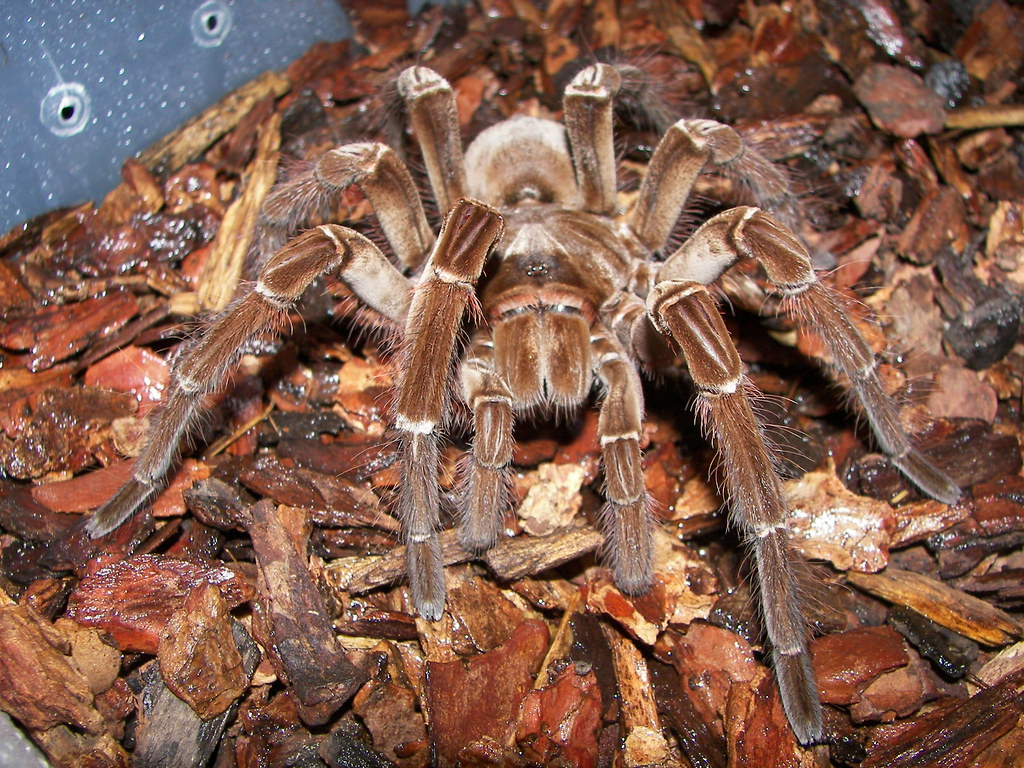In the vast world of arachnids, where over 45,000 species crawl and weave their way through our ecosystems, one spider stands literally larger than all others. The Goliath Birdeater (Theraphosa blondi) claims the title of the world’s largest non-venomous spider, commanding both fear and fascination from humans across the globe. Native to the rainforests of South America, this impressive arthropod can reach the size of a dinner plate when its legs are fully extended. Despite its intimidating appearance, this gentle giant offers a fascinating glimpse into the diversity and complexity of arachnid life. Let’s explore the remarkable world of this record-breaking spider, from its impressive physical characteristics to its surprising behaviors and evolutionary adaptations.
A Taxonomic Introduction to the Giant
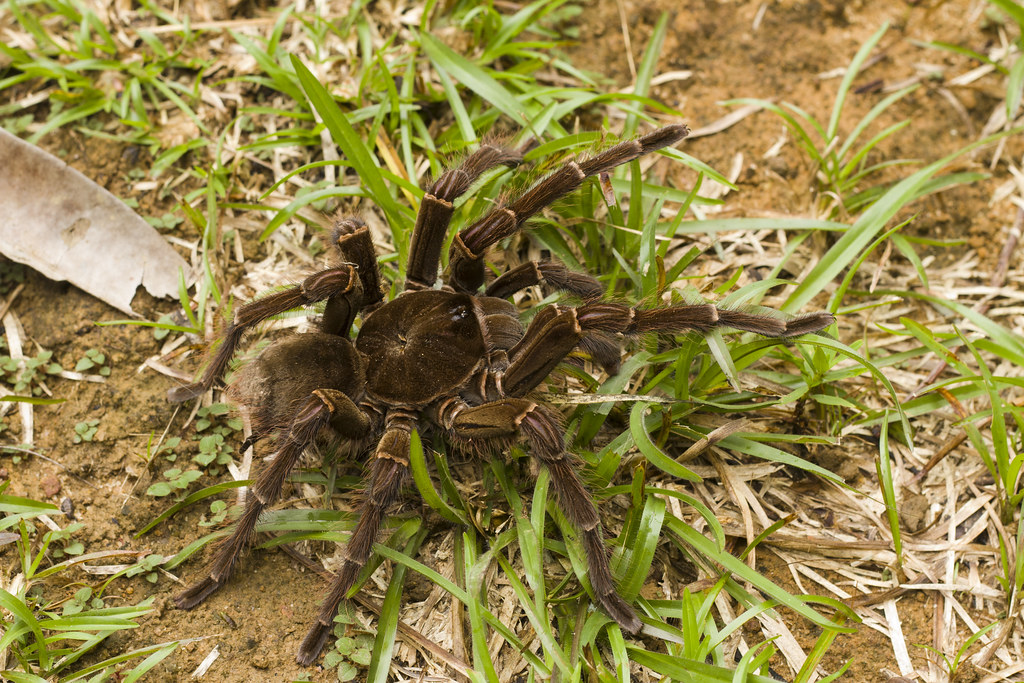
The Goliath Birdeater belongs to the family Theraphosidae, more commonly known as tarantulas, which comprises over 900 species worldwide. Specifically, it falls under the genus Theraphosa, which includes two other closely related species that are also impressively large. First scientifically described in 1804 by French zoologist Pierre André Latreille, this species earned its scientific name “blondi” in honor of Maria Sibylla Merian, a Dutch naturalist known by her married name “Blondin.” Taxonomically, the Goliath Birdeater represents an evolutionary marvel within the class Arachnida, having developed specialized adaptations for its rainforest habitat over millions of years. Its classification firmly places it among the mygalomorph spiders, an ancient group that retains many primitive characteristics compared to more recently evolved spider groups.
Record-Breaking Size and Proportions
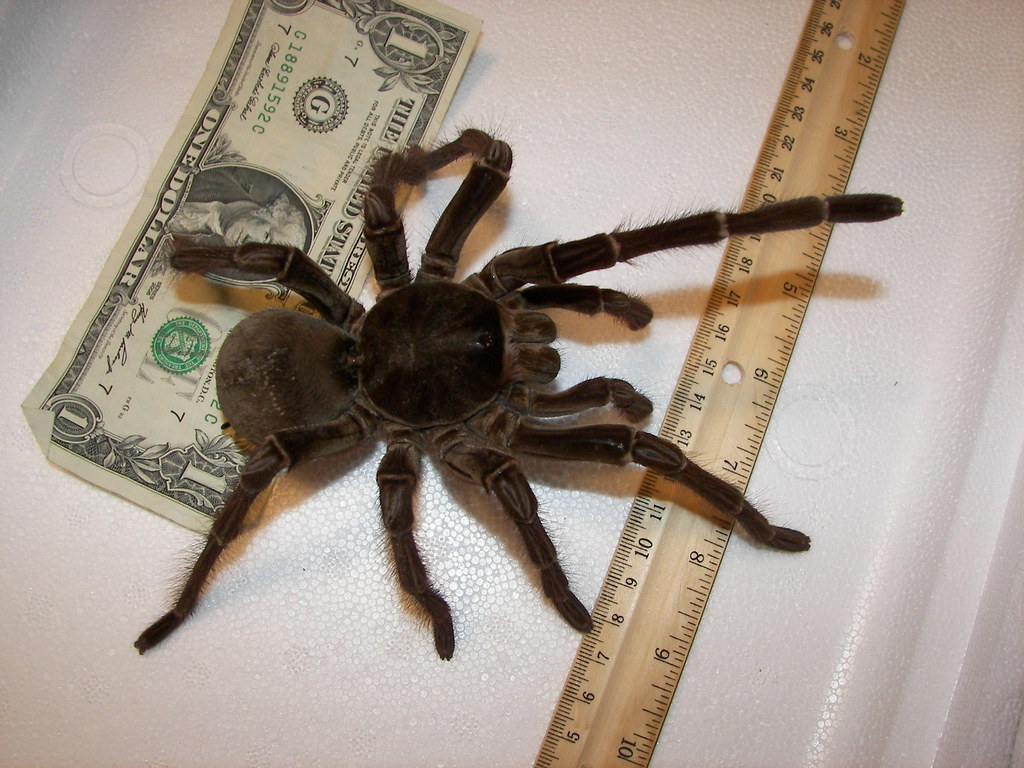
The Goliath Birdeater holds multiple impressive records in the arachnid world, most notably for its exceptional size. With a leg span that can reach up to 11 inches (28 centimeters), these spiders can cover an area larger than a standard dinner plate. Their body length alone typically measures between 3.5 to 5 inches (9 to 13 centimeters), making their bodies comparable to the size of a human fist. Weight-wise, these giants can tip the scales at over 6 ounces (170 grams), with some exceptional specimens approaching half a pound, making them heavier than many small birds and rodents. For perspective, if you were to place a Goliath Birdeater on your outstretched hand, its legs would likely extend well beyond your palm, potentially reaching your wrist and forearm—a thought that explains why even seasoned arachnologists approach these creatures with respectful caution.
Physical Appearance and Distinctive Features
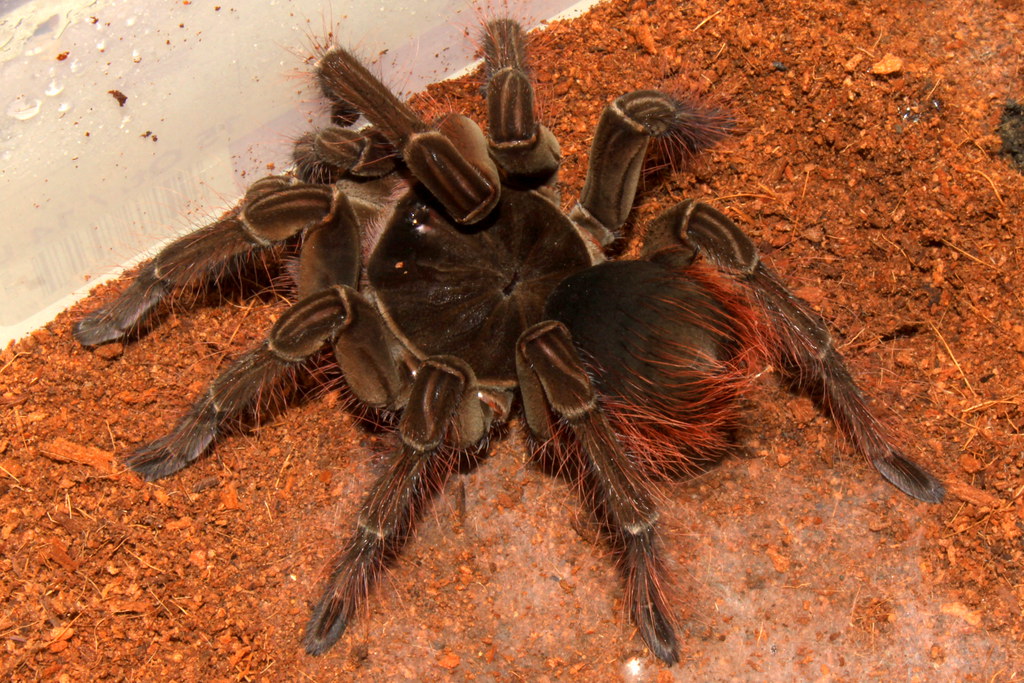
The Goliath Birdeater possesses a distinctive appearance that combines both formidable and almost prehistoric features. Its body coloration typically ranges from dark brown to light tan, often with subtle patterns that provide excellent camouflage in its forest floor habitat. The spider’s entire body is covered with coarse, reddish-brown hairs called setae, which serve multiple functions including sensory perception and defense. Perhaps most striking are the spider’s fangs, which can grow to an impressive 1 inch (2.5 centimeters) in length—large enough to pierce human skin with ease, though they rarely employ this capability defensively. The eight eyes of the Goliath Birdeater are arranged in a characteristic pattern on the cephalothorax, though their vision is relatively poor, with the spider relying more heavily on vibration and touch to navigate its environment.
Natural Habitat and Geographic Distribution

The Goliath Birdeater is endemic to the northern South American rainforests, particularly in countries including Brazil, Venezuela, Guyana, French Guiana, and Suriname. These spiders thrive specifically in the Amazon Basin, where they have adapted to the humid, tropical conditions of the rainforest floor. Unlike many spider species that construct elaborate webs, the Goliath Birdeater is a terrestrial species that creates burrows in the soil, often selecting locations near fallen trees or under large roots where the ground remains relatively stable. Their burrows can extend 1-3 feet (30-90 centimeters) into the ground, with a single entrance that the spider carefully maintains. The microhabitat within these burrows provides relatively stable temperatures and humidity levels, protecting the spider from the sometimes extreme fluctuations of the rainforest environment.
Dietary Habits: Do They Really Eat Birds?
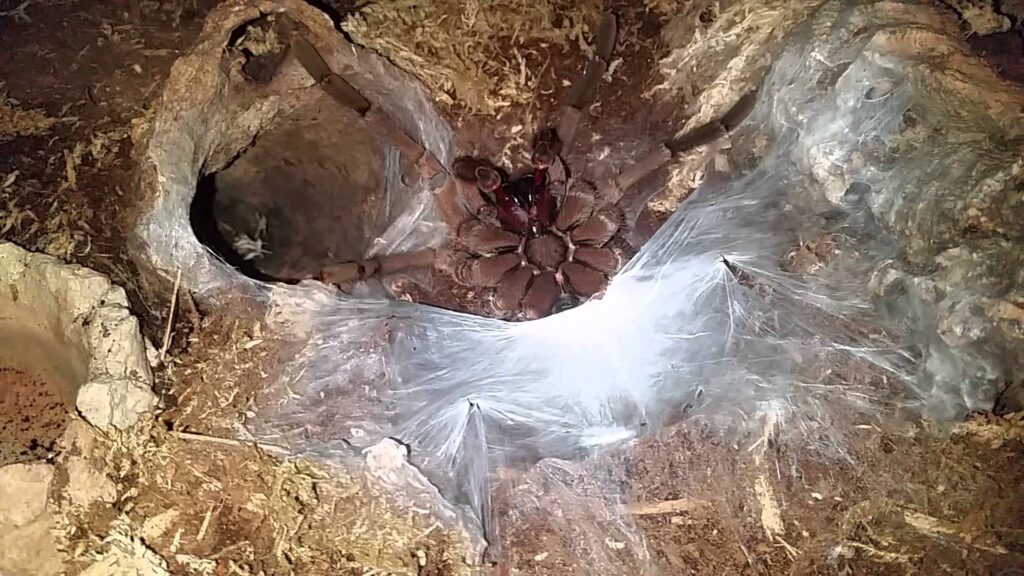
Despite its common name, the Goliath Birdeater does not primarily feed on birds—this is a misconception stemming from rare observations of these spiders opportunistically preying on small or young birds. In reality, these arachnids have a much more varied diet consisting mainly of large insects, earthworms, small amphibians, and occasionally small mammals like mice. They are ambush predators, waiting near the entrance of their burrows for prey to wander within striking distance before lunging forward with remarkable speed. When hunting, the Goliath Birdeater uses its powerful fangs to inject venom into prey, immobilizing it before beginning the consumption process. Unlike many spiders that digest their prey externally, tarantulas like the Goliath Birdeater partially digest their food internally after tearing it into manageable pieces with their chelicerae (mouthparts).
Lethal but Not Lethal: Understanding Their Venom
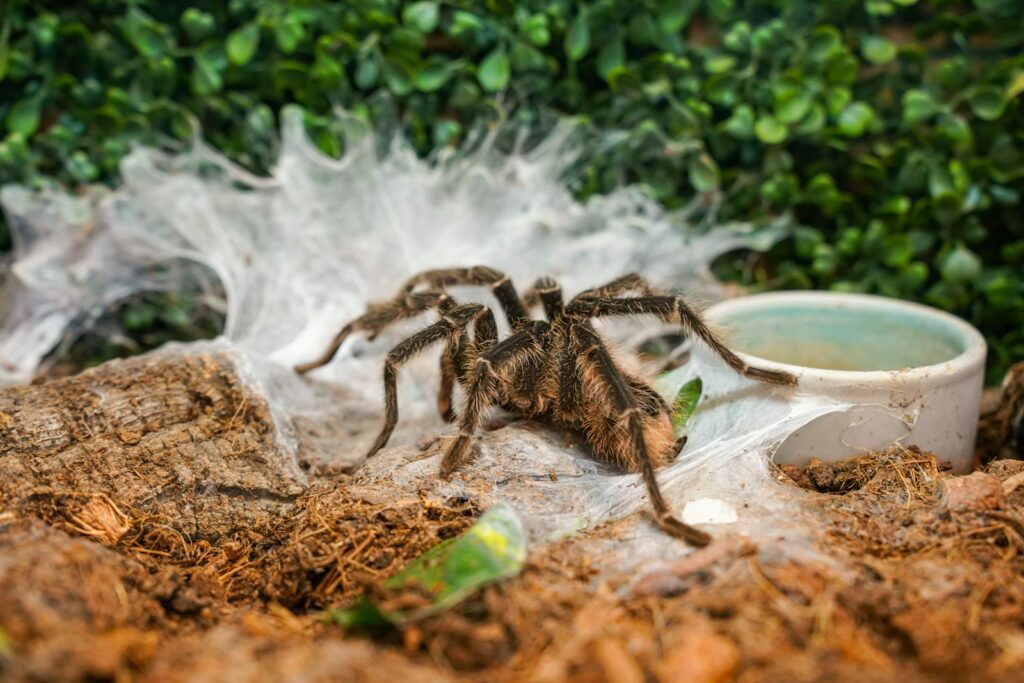
While the Goliath Birdeater is technically venomous, its venom is not considered dangerous to humans, placing it firmly in the category of non-lethal spiders despite its intimidating size. The venom serves primarily to subdue prey rather than as a defensive mechanism. When delivered to humans (a rare occurrence typically resulting from deliberate handling), a bite from this spider is often compared to a wasp sting in terms of pain and swelling, with symptoms generally resolving within 24 hours without medical intervention. Unlike truly dangerous spider species like the Brazilian wandering spider or Sydney funnel-web, the Goliath Birdeater lacks the neurotoxic compounds that make other spider venoms potentially fatal to humans. However, their large fangs can cause mechanical damage through puncture wounds, which should be cleaned properly to prevent secondary infections.
Unique Defensive Mechanisms
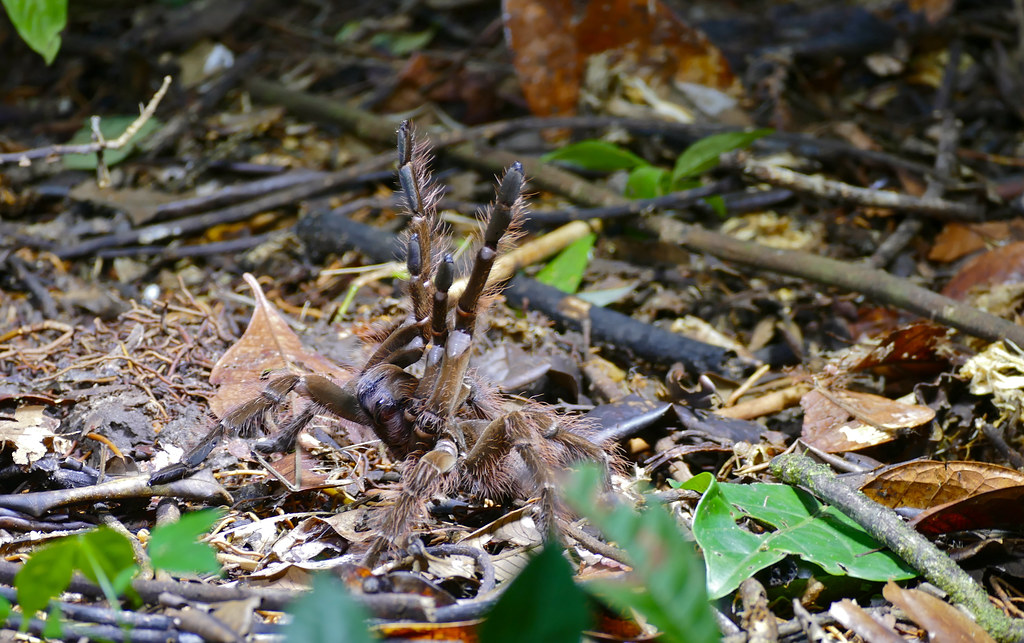
The Goliath Birdeater has evolved several fascinating defensive mechanisms that help compensate for its relatively mild venom. Perhaps most distinctive is its ability to produce a hissing sound by rubbing specialized bristles on its legs together, a process called stridulation that serves as an auditory warning to potential predators. When more seriously threatened, these spiders can employ their most famous defense: flicking urticating hairs from their abdomen toward the threat. These tiny barbed hairs can embed in skin and mucous membranes, causing irritation and discomfort that can last for days—particularly problematic if they contact sensitive areas like eyes. Additionally, the spider may rear up on its hind legs in a threat display, exposing its fangs and raising its front legs to appear larger and more intimidating. These multi-layered defense strategies allow the Goliath Birdeater to avoid predation despite being a relatively slow-moving and vulnerable ground dweller.
Reproduction and Life Cycle
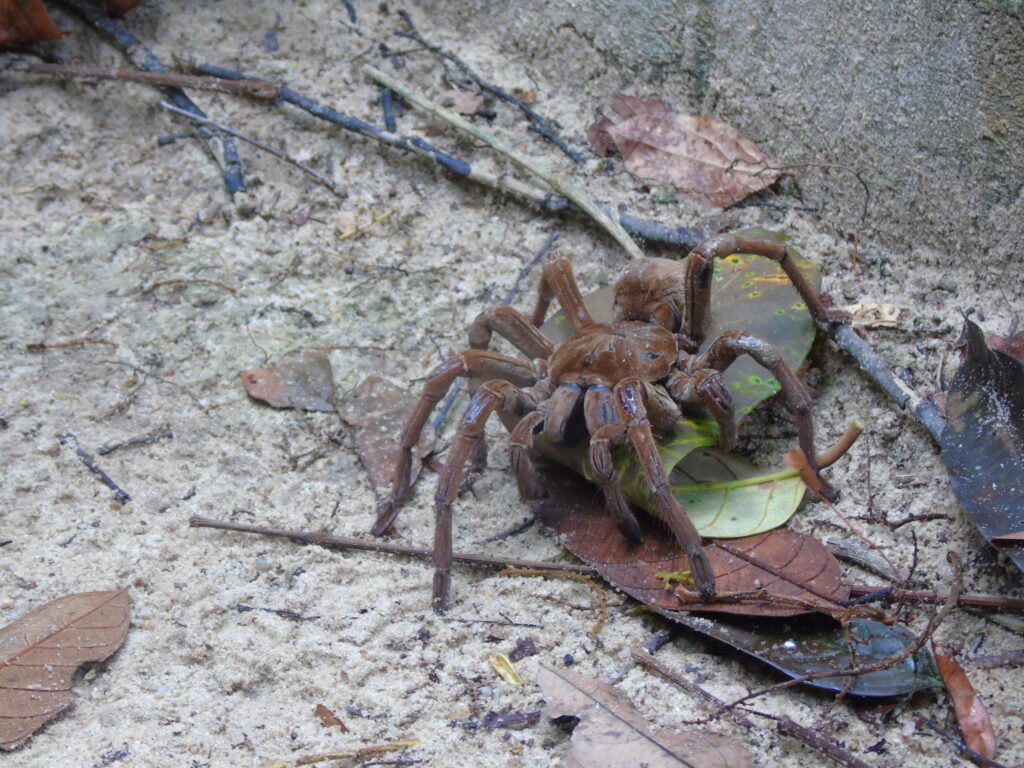
The reproductive process of the Goliath Birdeater reflects millions of years of evolutionary adaptation to ensure survival despite numerous environmental challenges. Mating is a precarious affair, with the significantly smaller male approaching the female cautiously to avoid being mistaken for prey. Males use specialized appendages called pedipalps to transfer sperm to the female, often performing a complex “dance” to signal their intentions. After mating, females produce an egg sac containing between 100-200 eggs, which they guard vigilantly for 6-8 weeks until the spiderlings emerge. These tiny offspring, each about the size of a fingernail, disperse quickly to avoid cannibalism from their mother or siblings. The Goliath Birdeater’s life cycle is remarkably extended compared to many invertebrates; females can live 15-25 years in the wild, while males typically live only 3-6 years, dying shortly after reaching sexual maturity and mating.
Growth Through Molting: The Path to Gigantism
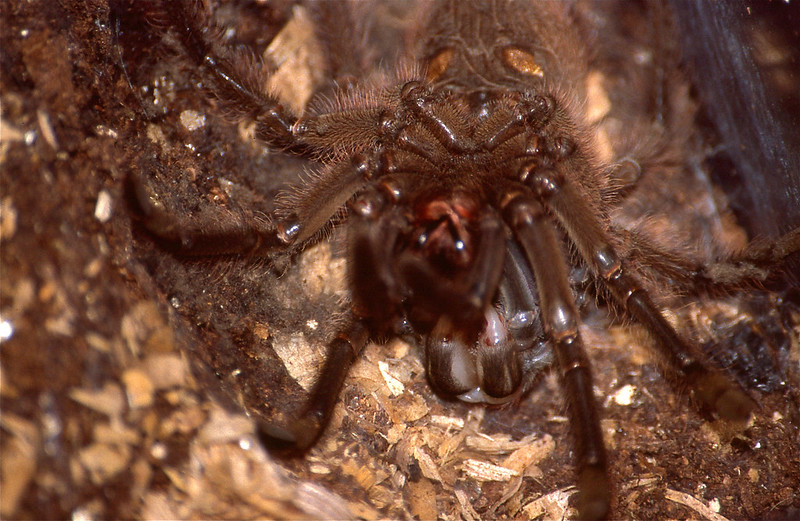
The impressive size of the Goliath Birdeater is achieved through a fascinating process of periodic molting throughout its lifetime. Unlike vertebrates with internal skeletons, spiders have exoskeletons that cannot expand as they grow, requiring them to shed their entire outer covering periodically. The Goliath Birdeater undergoes this vulnerable process numerous times during its development, with young spiders molting every few months and adults typically molting annually. During molting, the spider positions itself on its back, using hydraulic pressure to split the old exoskeleton along pre-formed seams, then carefully extracting itself from the discarded shell. Immediately after molting, the spider is extremely vulnerable, with a soft, pale exoskeleton that takes several days to harden and darken. This process continues throughout the spider’s life, with females continuing to grow slightly with each molt even after reaching sexual maturity—one factor contributing to their exceptional size compared to other spider species.
Relationship with Humans: Fear and Fascination
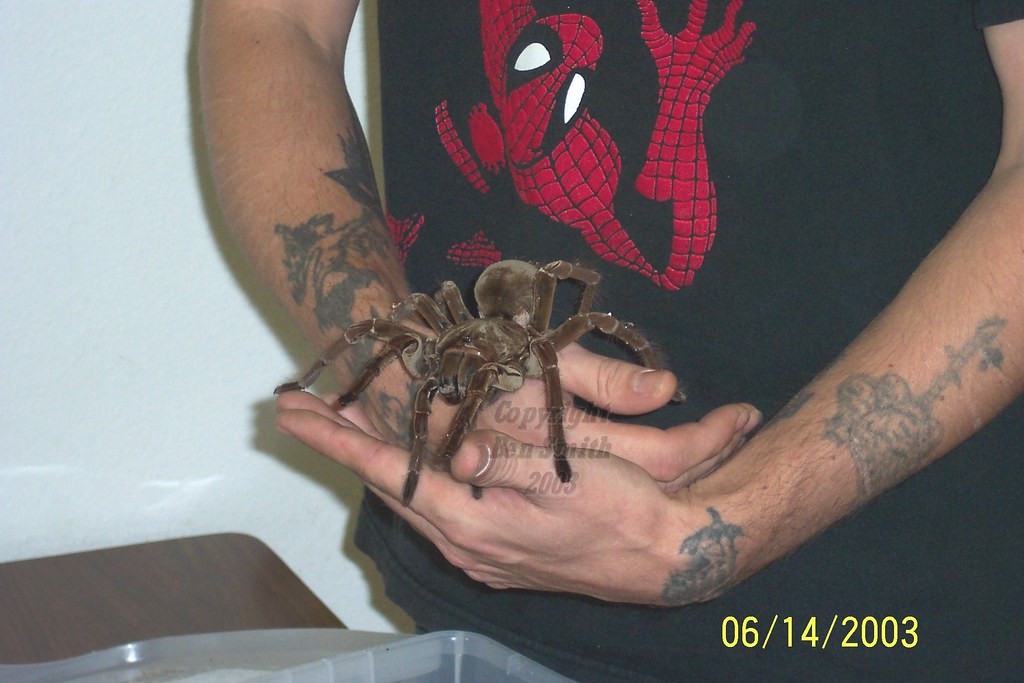
The Goliath Birdeater has long occupied a complex place in human culture, eliciting both terror and admiration from those who encounter it. Among indigenous peoples of the Amazon, these spiders have been incorporated into folklore and sometimes used as a food source, with roasted tarantulas considered a delicacy in some communities. In the global exotic pet trade, these spiders command high prices and dedicated followings of enthusiasts who appreciate their impressive size and relatively docile nature compared to other large tarantula species. Scientific research on the Goliath Birdeater has revealed valuable insights into arachnid physiology, behavior, and evolution, contributing to broader understanding of arthropod biology. Despite their intimidating appearance, these spiders rarely pose any genuine threat to humans and typically retreat rather than attack when encountered in the wild, preferring to avoid confrontation with creatures so much larger than themselves.
Conservation Status and Environmental Threats

While not currently listed as endangered, the Goliath Birdeater faces increasing pressure from several human-driven threats to its survival. Habitat destruction through deforestation of the Amazon rainforest represents the most significant risk, as these spiders require specific environmental conditions to thrive and cannot easily adapt to dramatically altered landscapes. The international exotic pet trade has also impacted wild populations, with collection of specimens sometimes occurring at unsustainable rates in certain regions. Climate change poses an additional long-term threat, as alterations in rainfall patterns and temperature regimes may disrupt the delicate ecological balance these spiders depend upon. Conservation efforts remain somewhat limited for invertebrate species compared to vertebrates, though there is growing recognition among conservation biologists about the crucial ecological roles played by predatory arthropods like the Goliath Birdeater in maintaining healthy forest ecosystems.
Ecological Importance in the Rainforest Ecosystem
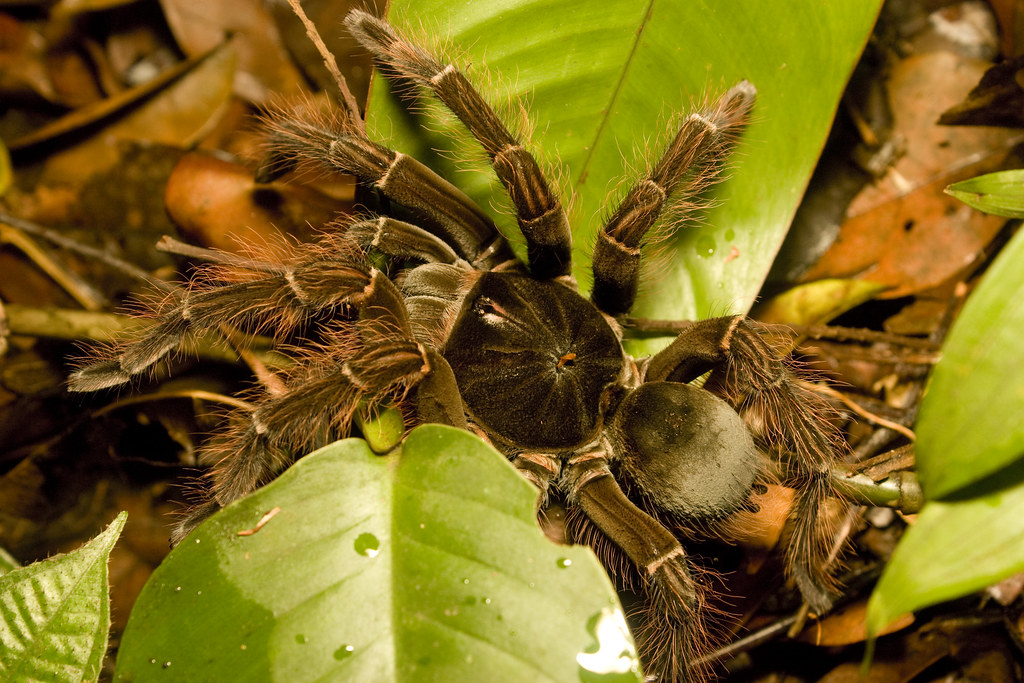
Despite their fearsome reputation, Goliath Birdeaters play a vital role in the complex web of rainforest ecology. As predators, they help control populations of insects and small vertebrates that might otherwise reach problematic numbers. Their burrows contribute to soil aeration and drainage, improving soil quality in their immediate vicinity. When young spiderlings disperse, they become an important food source for numerous rainforest predators including birds, reptiles, and mammals, representing a significant transfer of energy through the food web. The abandoned molts of these spiders decompose and return valuable nutrients to the forest floor, contributing to the nutrient cycling processes that maintain rainforest fertility. By understanding the ecological functions of even intimidating creatures like the Goliath Birdeater, scientists gain better insight into the intricate balance that sustains one of Earth’s most diverse and threatened ecosystems.
Captive Care and the Ethics of Spider Keeping
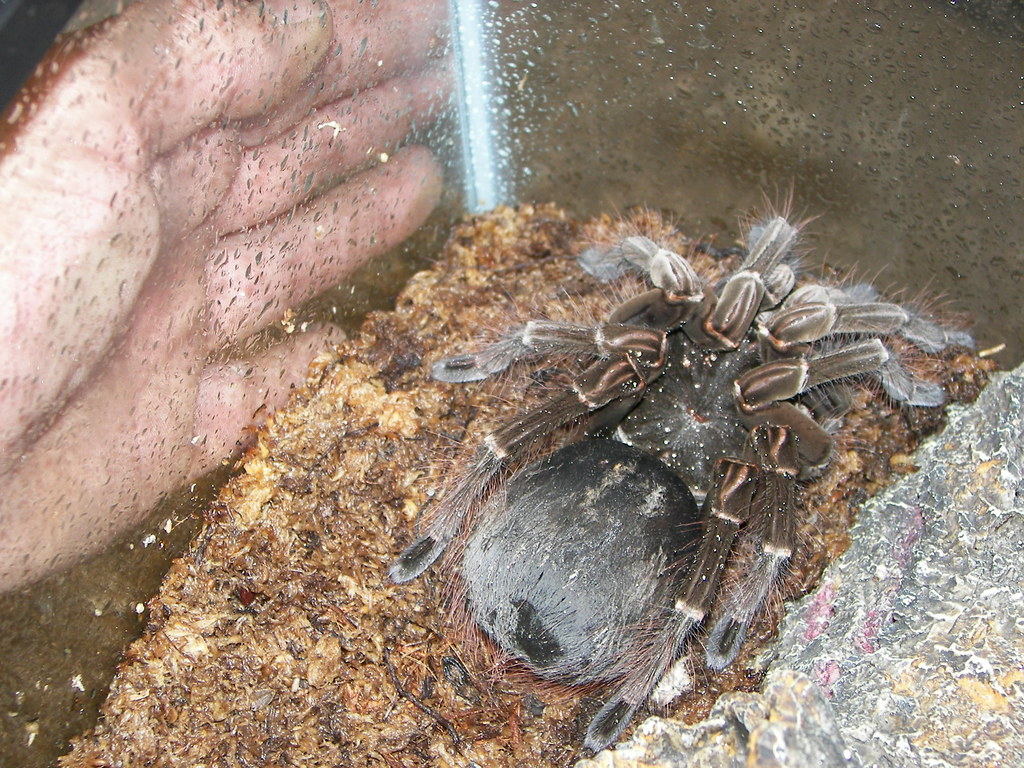
The keeping of Goliath Birdeaters in captivity has become increasingly popular among exotic pet enthusiasts, though it raises several important considerations regarding both animal welfare and ethics. Proper care for these spiders requires specialized knowledge and equipment, including appropriately sized enclosures (typically at least 20-gallon tanks), substrate deep enough for burrowing (8-10 inches), controlled temperature and humidity levels, and regular feeding with appropriate live prey items. Ethical considerations include the source of specimens, with captive-bred individuals generally preferred over wild-caught spiders to minimize impact on natural populations. The responsibility of owning such a long-lived creature cannot be understated, as female Goliath Birdeaters can live for over two decades in captivity with proper care. Education and understanding of natural behaviors are essential for keepers to provide environments that allow these magnificent arachnids to express their natural behaviors despite being removed from their native habitat.
Conclusion: Appreciating the Gentle Giants
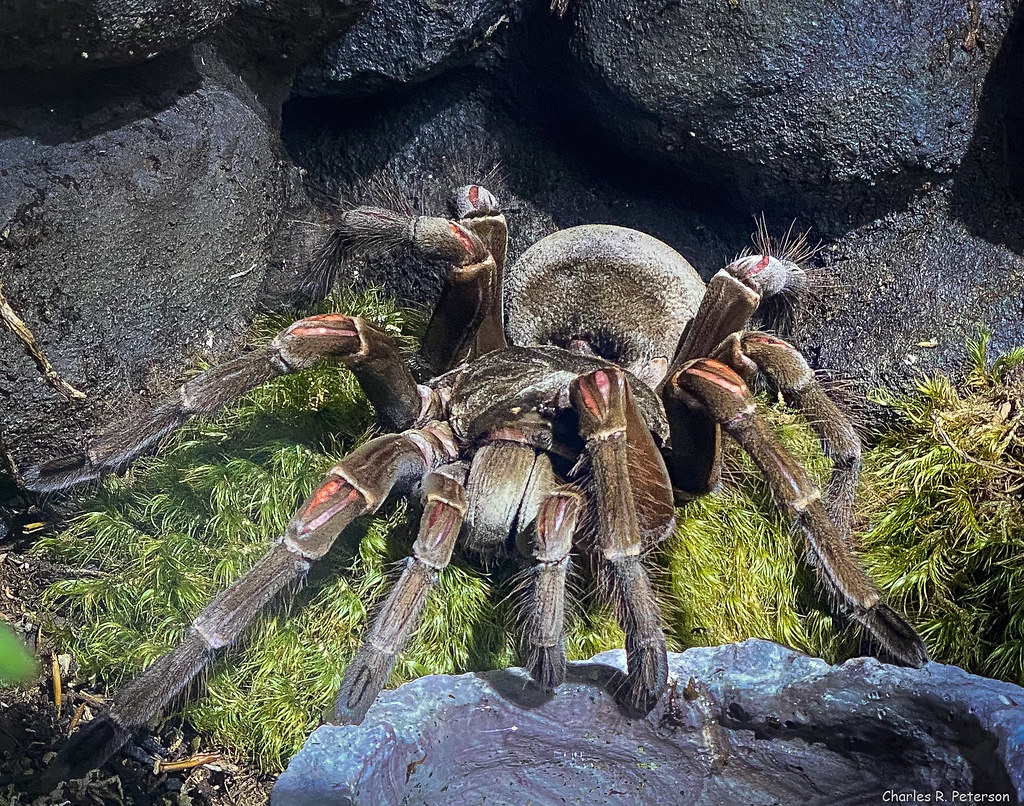
The Goliath Birdeater stands as a remarkable example of evolutionary success, having perfected its existence as a rainforest predator over millions of years. Despite its intimidating appearance and record-breaking size, this spider exemplifies the fascinating diversity of life that has evolved in our world’s most complex ecosystems. As we continue to learn more about these impressive arachnids, perhaps the greatest value they offer is a reminder that fear of the unknown often dissolves with understanding and education. By appreciating rather than vilifying these gentle giants, we gain not only scientific knowledge but also a deeper appreciation for the complex and intricate ways life has found to thrive in every corner of our planet. The Goliath Birdeater, in all its oversized glory, reminds us that sometimes the creatures we fear the most deserve our protection and admiration the most.

